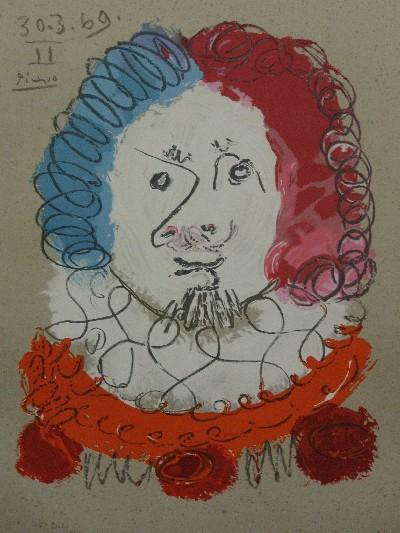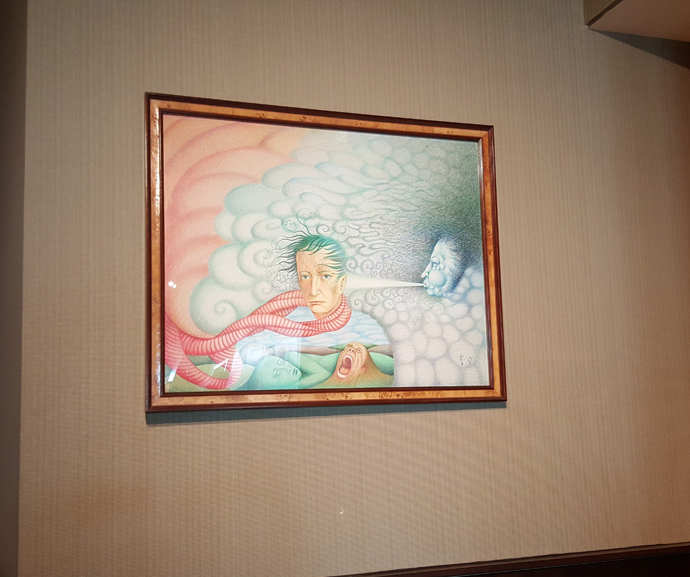Did you know that TU Special Collections has a lithographic print by Pablo Picasso in our artwork holdings?
Picasso’s 1969 depiction of a clown, titled “Portrait Imaginaire,” is number 242 of 250 prints that Picasso made of this design, and is a part of our Dame Rebecca West papers.
Beginning in 2011, the piece was displayed in the Lorton Performing Arts Center, with oil paintings by artists like Daniel Lang and Lawrence Paul.
Recently, two of our librarians overheard some members of staff asking: where was the famous Picasso? It wasn’t hanging in its usual spot in Lorton, and something else had gone up in its place.
The story behind the Picasso’s removal is a pretty typical one, and is an important example of why good conservation and stewardship are essential to making sure that future members of the TU family will be able to enjoy artwork from our collections.
Lithographic prints are different from paintings because the inks used to produce the image have no defense against fading, while oil paintings can tolerate slightly more UV exposure. It’s important to note, however, that sun will damage all artwork eventually, and that pieces must be treated with care to extend their longevity.
“Portrait Imaginaire” was enjoyed as a public display for 5 years. Unfortunately it had been hung in a spot on an east-facing wall where it received an hour of unfiltered sunlight every morning during that time. It was decided in January that the piece needed to be assessed by a paper conservator at the Helmerich Center for American Research in order to determine with certainty what levels of damage, if any, it had experienced.
The conclusion on the report we received was clear: the original mottling on the paper, as well as the ink colors, had experienced fading due to exposure to sunlight while it was on exhibit. The paper conservator’s professional recommendation was what we expected: the piece needed to be removed and placed in a dark space with archival buffers for a “rest period” so we could ensure that it would have a good continued “life”.
So where is the Picasso now? We have it placed in a large acid-free folder with several layers of archivally-safe “buffer” paper for both pH quality and physical safety, and stored where it can enjoy some time away from the spotlight—although we welcome visitors and researchers who want to view the piece in our Reading Room.
And what about the blank space?
Hanging on the same wall now is a piece by Igor Tulipanov showing Pushkin breathing inspiration into the mind of Baudelaire. This painting was donated to Special Collections by Professor Yevgeny Yevtushenko.
If you visit the Tulipanov at Lorton, you’ll see one of these peeking out on the wall:
This is a Blue Wool Scale UV-detection strip, commonly used in museums and archival settings. As the name suggests, the blue stripes are actually strips of wool dyed blue. These cards are placed vertically, with half the strips positioned behind the frame, and left there for three months. Our librarians will be periodically checking the colors on the card to see how they change and fade over time so that we can determine how much sunlight that particular wall receives.
As you can see, the missing Picasso is no great mystery at all. It’s taking a rest and allowing other pieces from our art collections to have their own turn at public exhibition.





Pingback: Yevgeny Yevtushenko | From McFarlin Tower